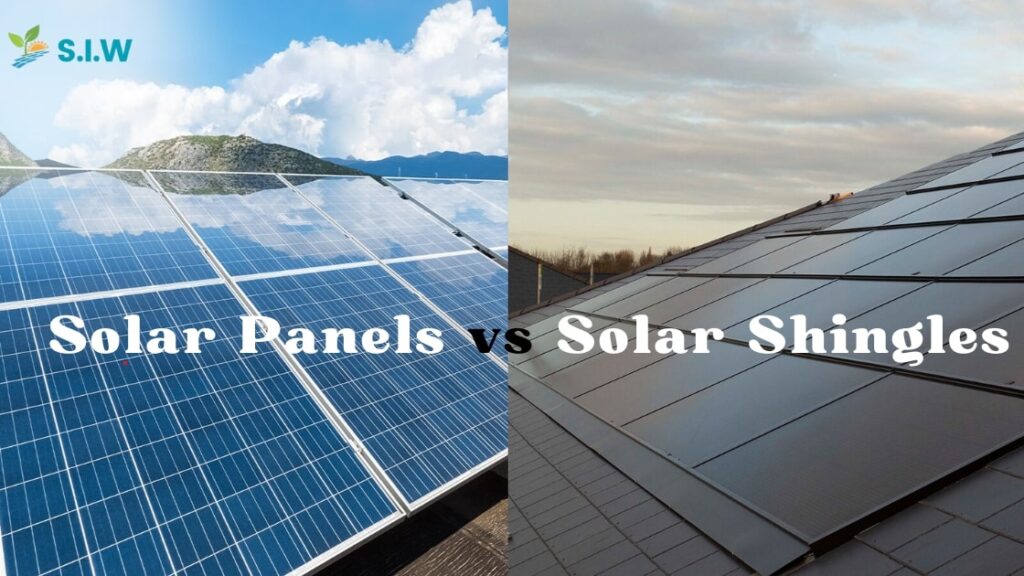When it comes to harnessing the power of the sun, homeowners often find themselves choosing between solar shingles and solar panels. Both technologies aim to provide renewable energy, but they do so in different ways. Understanding these differences is crucial for making an informed decision that suits your home and energy needs.
What Are Solar Shingles?
Solar shingles are a relatively new innovation in solar energy technology. They serve as both roofing material and solar energy collectors. This dual functionality makes them appealing to homeowners who want to maintain the aesthetic of their homes while investing in renewable energy.
I remember when my neighbor installed solar shingles. Initially, I was skeptical about their efficiency. However, after discussing their experience, I learned that solar shingles can integrate seamlessly with a home’s architecture while generating electricity.
The Basics of Solar Panels
On the other hand, traditional solar panels are mounted on rooftops or on the ground. They consist of photovoltaic cells that convert sunlight into electricity. While they may not blend as well with the home’s design, they often provide higher energy output compared to solar shingles.
In my case, I opted for solar panels because I wanted maximum energy production. The difference was noticeable during the summer months when my electricity bill dropped significantly.
Comparing Efficiency
When evaluating solar shingles versus solar panels, efficiency is a key factor. Traditional solar panels typically boast higher efficiency ratings, often exceeding 20%, compared to solar shingles, which generally range between 15-20%. This means that if space is a concern, solar panels may be the more effective choice for generating electricity.
However, solar shingles have come a long way in terms of efficiency. The technology is constantly evolving, and manufacturers are working hard to improve their performance.
Aesthetic Appeal
One of the most significant advantages of solar shingles is their aesthetic appeal. They blend into the roof, giving homes a sleek and modern look. For homeowners concerned about curb appeal, solar shingles can be a more attractive option.
When I visited a friend’s house with solar shingles, I was amazed at how well they integrated with the roof. It didn’t look like a typical solar installation, which can sometimes be bulky and unattractive.
Installation Considerations
Installation can also differ between the two technologies. Solar shingles often require specialized installation due to their unique design, which can lead to higher labor costs. In contrast, solar panels can be installed more quickly and by a wider range of contractors.
For instance, when I had my solar panels installed, the process was straightforward and completed in a single day. My friend who installed solar shingles mentioned that it took longer due to the need for precise integration with the roof structure.
Cost Comparison
When it comes to costs, solar shingles tend to be more expensive upfront compared to traditional solar panels. The dual functionality of solar shingles means you are paying for both roofing and solar technology. While this can be a drawback, it’s essential to consider the long-term savings on energy bills.
In my experience, the investment in solar panels paid off within a few years. I started seeing a significant reduction in my energy costs, making the upfront investment worthwhile.
Maintenance and Durability
Both solar shingles and solar panels are designed to withstand various weather conditions. They are durable and require minimal maintenance. However, it’s important to clean them periodically to ensure optimal performance.
After a heavy storm, I noticed my solar panels collected debris that blocked sunlight. A quick wash restored their efficiency. Similarly, my friend with solar shingles also made it a point to keep them clean to maintain performance.
Best Integrations
Another consideration is integrating a hybrid battery core with your solar system. Both solar shingles and solar panels can be paired with battery storage to maximize energy use and provide backup during outages. A hybrid battery core allows homeowners to store excess energy generated during the day for use at night or during cloudy days.
Incorporating battery storage can enhance the overall efficiency of your solar system. During my research, I found that many homeowners experienced peace of mind knowing they had stored energy available for emergencies.
Given Results
In summary, choosing between solar shingles and solar panels largely depends on individual preferences, budget, and specific energy needs. If aesthetics are a priority and you’re willing to invest more upfront, solar shingles might be the way to go. Conversely, if you want maximum efficiency and are okay with the traditional look, solar panels are a solid choice.
I encourage anyone considering solar technology to evaluate their options carefully and consult with a professional. The future of energy is bright, and both solar shingles and panels contribute to a sustainable world.
FAQs
- Are solar shingles more efficient than solar panels?
No, traditional solar panels generally have higher efficiency ratings than solar shingles, which tend to be around 15-20%. - How long does the installation of solar shingles take?
Installation can take longer for solar shingles due to their unique design and integration with the roof. It may take a few days, compared to one day for solar panels. - Can I use a hybrid battery with solar shingles?
Yes, both solar shingles and solar panels can be integrated with a hybrid battery core for energy storage and backup. - What are the maintenance requirements for solar shingles?
Both solar shingles and solar panels require minimal maintenance, but periodic cleaning is recommended to ensure optimal performance. - Do solar shingles increase home value?
Yes, installing solar shingles can increase the home’s value, especially for buyers interested in energy efficiency and sustainable living.








